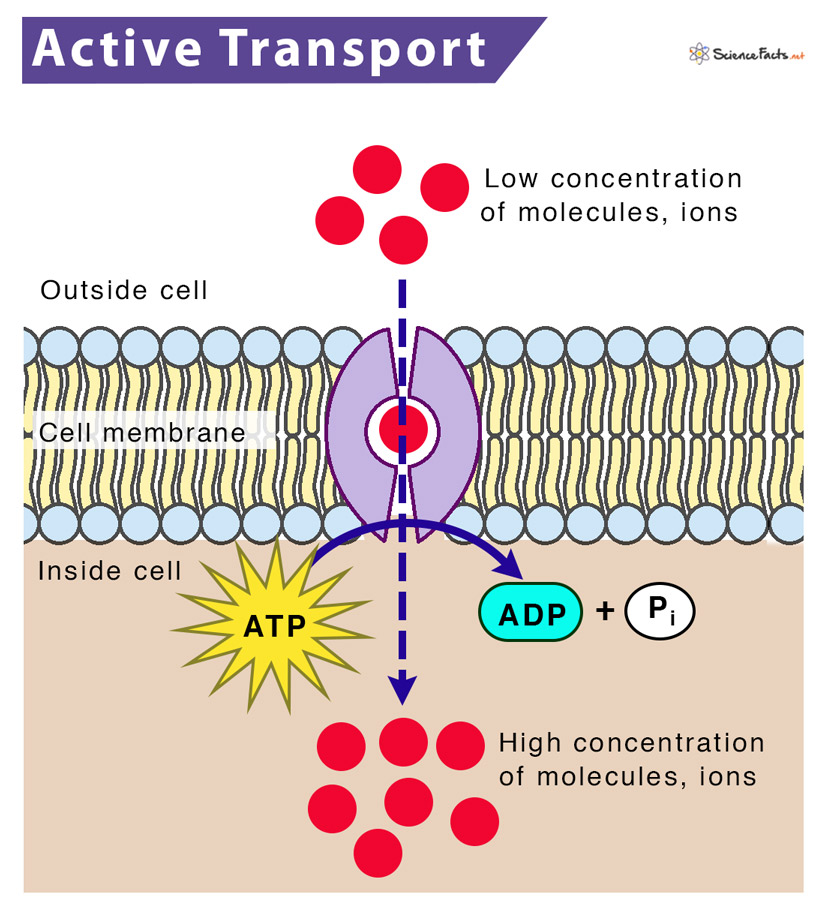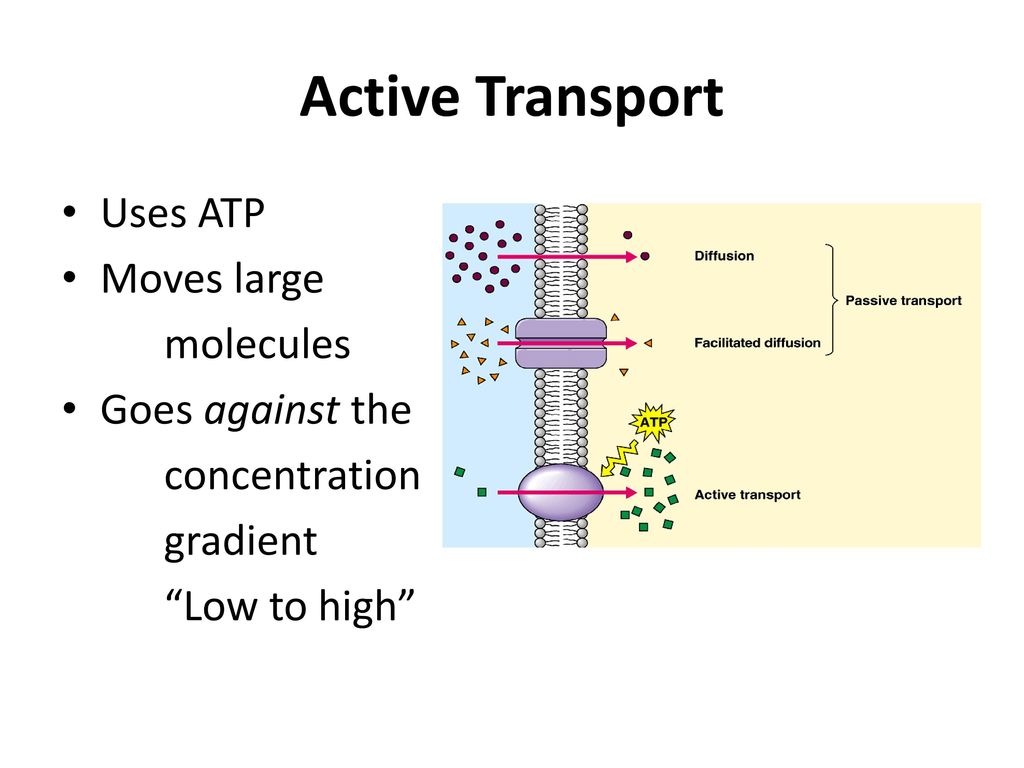Active Transport Uses Energy Provided By Atp Molecules

The intricate machinery of life relies on a constant flow of energy to maintain order and perform essential functions. At the heart of many of these processes lies active transport, a cellular mechanism that moves molecules against their concentration gradient, a feat that demands a significant energy input. This energy is supplied by ATP (adenosine triphosphate), the cell's primary energy currency.
This article explores the fundamental role of ATP in powering active transport, detailing the mechanisms involved, its significance in biological systems, and the potential implications for understanding and treating various diseases. Understanding this process is crucial for comprehending basic biology, as well as for advancing medical research and therapeutic development.
What is Active Transport and Why Does it Need ATP?
Active transport is the movement of molecules across a cell membrane from a region of lower concentration to a region of higher concentration. This process is crucial for maintaining the appropriate internal environment of cells and carrying out specialized functions.
Unlike passive transport, which relies on the concentration gradient and requires no energy input, active transport works against the gradient, necessitating a direct energy source. This is where ATP comes into play.
ATP is a complex organic chemical that provides energy to drive many processes in living cells, e.g. muscle contraction, nerve impulse propagation, and chemical synthesis. It is often referred to as the "molecular unit of currency" of intracellular energy transfer.
The Role of ATP in Powering Active Transport
The hydrolysis of ATP provides the energy needed for active transport. This process involves the breaking of a phosphate bond in ATP, releasing energy and converting ATP into ADP (adenosine diphosphate) and inorganic phosphate.
This released energy is then coupled to the transport of specific molecules across the cell membrane by specialized proteins called transport proteins or pumps. These pumps bind to the molecule being transported and undergo a conformational change upon ATP hydrolysis, effectively pushing the molecule against its concentration gradient.
One of the most well-known examples is the sodium-potassium pump (Na+/K+ ATPase), found in the plasma membrane of most animal cells. This pump uses the energy from ATP to simultaneously transport three sodium ions (Na+) out of the cell and two potassium ions (K+) into the cell. This process is essential for maintaining the electrochemical gradient across the cell membrane, which is critical for nerve impulse transmission, muscle contraction, and nutrient transport.
Types of Active Transport
Active transport can be further categorized into two main types: primary active transport and secondary active transport.
Primary active transport directly uses the energy from ATP hydrolysis to transport molecules, as seen with the sodium-potassium pump. In contrast, secondary active transport uses the energy stored in the electrochemical gradient created by primary active transport to move other molecules.
For instance, the sodium-glucose cotransporter (SGLT) in the intestinal cells utilizes the sodium gradient established by the sodium-potassium pump to transport glucose into the cell against its concentration gradient. Therefore, while SGLT doesn't directly use ATP, it relies on the sodium gradient established by a pump that does.
Significance and Implications
Active transport is fundamental to numerous biological processes, including maintaining cell volume, regulating ion concentrations, absorbing nutrients, and removing waste products. Disruptions in active transport can have significant consequences for cellular function and organismal health.
For instance, mutations in genes encoding transport proteins can lead to various diseases, such as cystic fibrosis (caused by a defect in a chloride channel) and familial hypercholesterolemia (caused by a defect in the LDL receptor). Understanding the molecular mechanisms of active transport is therefore critical for developing new therapies for these and other diseases.
Research into active transport mechanisms is also paving the way for the development of targeted drug delivery systems. By engineering transport proteins to specifically recognize and transport therapeutic agents into target cells, scientists hope to improve drug efficacy and reduce side effects. This innovative approach holds immense promise for treating a wide range of diseases, including cancer and infectious diseases.
Human Interest: Active Transport in Action
Consider the remarkable journey of nutrients from your digestive system into your bloodstream. Active transport plays a vital role in this process.
After food is broken down into smaller molecules, such as glucose, these molecules are actively transported across the intestinal cells lining into the bloodstream. Without this process, the body wouldn't be able to absorb the nutrients needed to fuel your daily activities.
The next time you eat a meal, take a moment to appreciate the intricate and energy-demanding process of active transport that ensures you get the nourishment you need to thrive. It is a testament to the remarkable efficiency and complexity of the biological world.




+to+help+nutrients+enter+the+cell+that+can’t+pass+through+the+cell+membrane+by+diffusion..jpg)



+to+move+materials+against+the+gradient..jpg)







.jpg)
+REQUIRES+ENERGY+(ATP).jpg)
